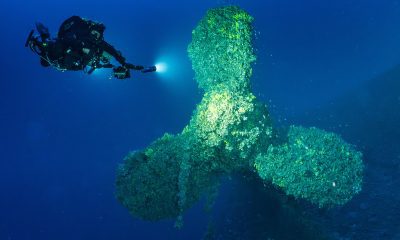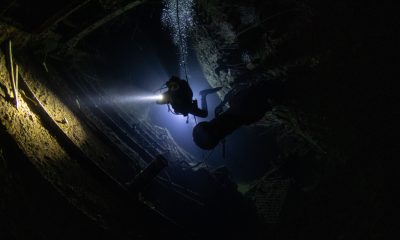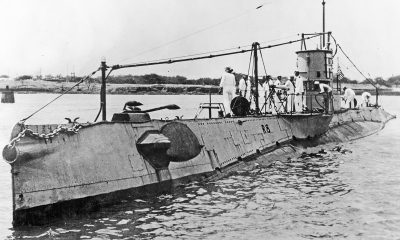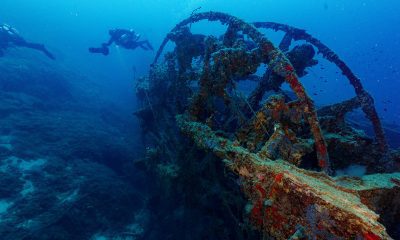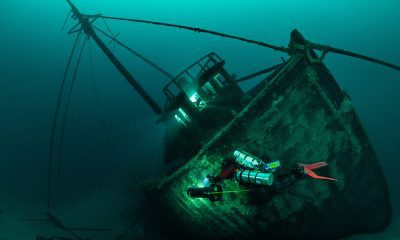History
Trip Report: The Wreck of the Salem Express
Belgium service member, cave explorer and tech instructor Kurt Storms takes us for a dive on the Red Sea’s Salem Express, which is considered one of the most controversial wreck dives in Egypt. Tragically more than 460 people lost their lives when the ship capsized. Storms has the details.
Text and images by Kurt Storms
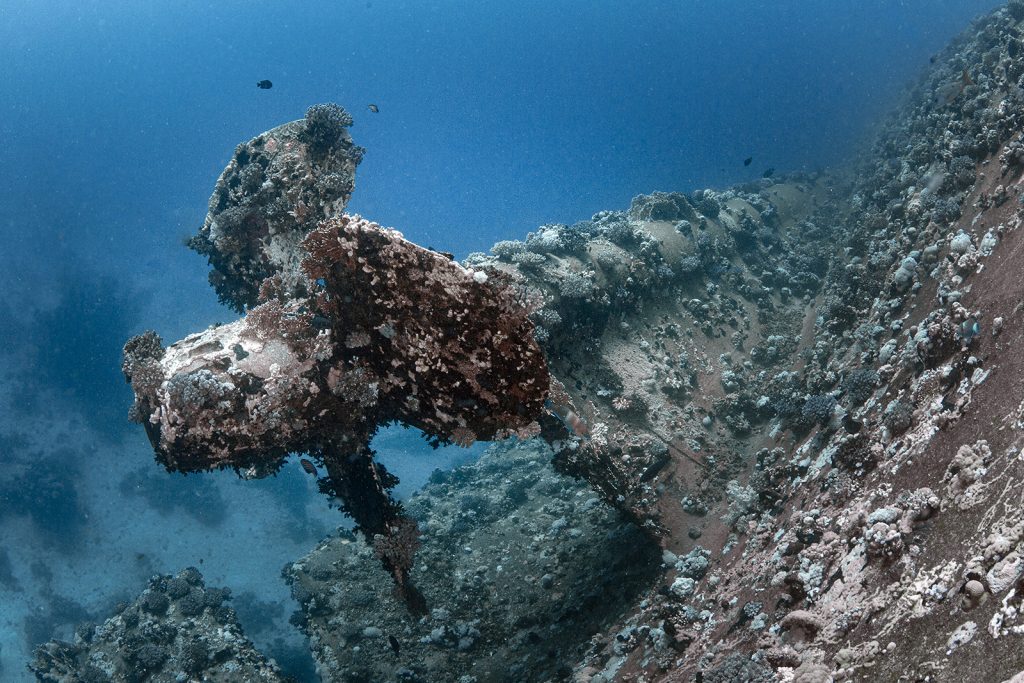
The story of the Salem Express — which now sits about 30 meters below the surface of the Red Sea — started in France in June 1965 when she was launched as a roll-on, roll-off ferry for vehicles and passengers in the Mediterranean. Initially named for Fred Scamaroni, a member of the French resistance of WWII, the 115-meter-wide long and 18-meter-wide ship endured a fire in the engine room before sailing her first route in June 1966 between Marseille-Ajaccio. It was the first trip of many she would make over the next nearly 25 years before her final voyage resulted in the tragic loss of many lives. Today, the Salem Express is considered the most controversial wreck dive in Egypt.
The ship’s owner, Compagnie Generale Transatlantique, sold her to the Samatour shipping company in 1988 under the new name, the “Salem Express.” In 1991, she began sailing her usual 450-mile route from Jeddah, Saudi Arabia, to Safaga, Egypt. It was a standard trip, expected to take 36 hours and ferry about 350 passengers to Safaga before heading to Suez. This time, though, the ship’s departure was delayed for two days in Saudi Arabia because of a mechanical fault. Those two days put the Salem Express in the middle of a storm with gale force winds.

On Dec. 14, 1991, the ship was returning from Jeddah with hundreds of pilgrims who had just been to Mecca. The storm was raging, drenching passengers on the outer decks, so Captain Hassan Moro – who had commanded the ship since 1988 — decided to attempt to cut time off the journey by staying closer to shore rather than sailing the standard route along the outer reefs. Unfortunately, the captain misjudged their position, and at 11:31 p.m., the Salem Express ran out an outer pinnacle of Hyndman Reef. The result was disastrous.
Not only was water coming in from a hole in the starboard side, but the hard impact caused the bow-loading door to open, letting in thousands of liters of water. Almost immediately, the ferry started to list over to the starboard side, making it impossible for the crew to deploy any of the lifeboats.
The Salem Express sank within 20 minutes of hitting the reef, trapping many people inside. Others had to swim to shore as the storm and location of the tragedy occurred, more than an hour from the port, delayed rescue boats.
The first survivor, Ismail Abdul Hassan, was an amateur long-distance swimmer who worked as an agricultural engineer. Hassan stood on the ship’s deck as it went down and followed the lights of the port to shore, surviving eight hours in the water. He intended to lead two other men to safety, who held onto his clothes, but they had trouble keeping their heads above the water and after two hours struggling they drowned.

Loss of life was considerable. The official figure provided by the Egyptian government is 464, but rumors suggest the ship was overloaded and the death toll may have been closer to 1,200. Many bodies were recovered after the sinking, but eventually a halt was called due to the danger involved and the wreck was sealed with plates welded across openings.
Though it’s allowed to penetrate the wreck, the guides will not go far inside, because a large area where people were trapped inside and died is welded shut, and they consider it to be a seaman’s grave. In addition, because the wreck is unstable, penetration through the narrow passages is difficult for recreational divers. As a result, the guides will only penetrate in the back cargo rooms.
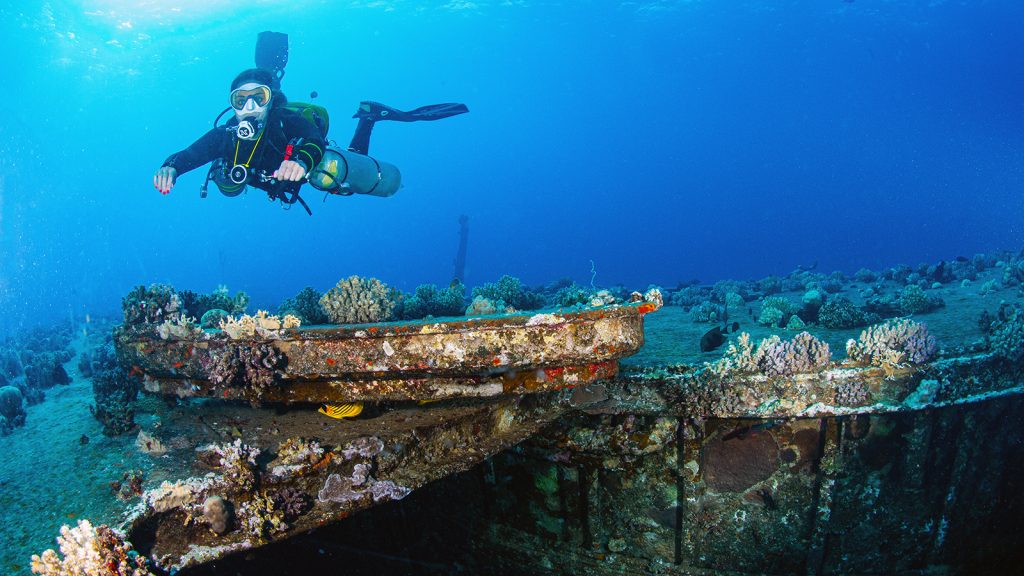
Diving the Wreck
| Do you have a story to share about a unique, challenging, or otherwise notable dive? Contact [email protected] to submit an idea for a trip report. |
We reached the wreck of the Salem Express, lying on its port side in 30 meters/100 ft of seawater, and made our way around the stern. Visibility was good, and we first saw the two giant propellers and the rudder. We took some pictures and headed to the decks, where we saw a lifeboat. In the past there were two; it’s unclear what happened to the second.
I like wrecks, but I don’t like lifeboats on the bottom of the ocean. Lifeboats are supposed to carry people when the ship sinks, and bring them to safety. They can’t do that when they’re on the bottom.
At the back of the ship, I saw a radio and television set laying in the sand. This must have been put here by divers before me, because this was not a natural movement. We went further toward the bow and saw the big exhausts, full of life. On the side of the ship, you can see the name, Salem Express. Lots of coral has grown in the years since the ship sunk.
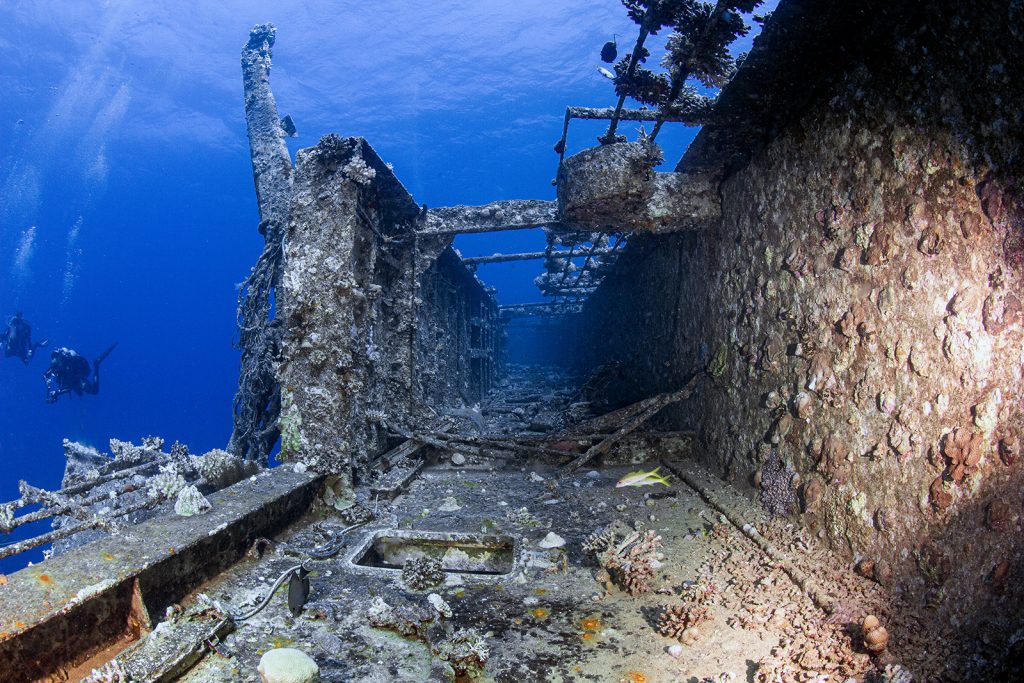
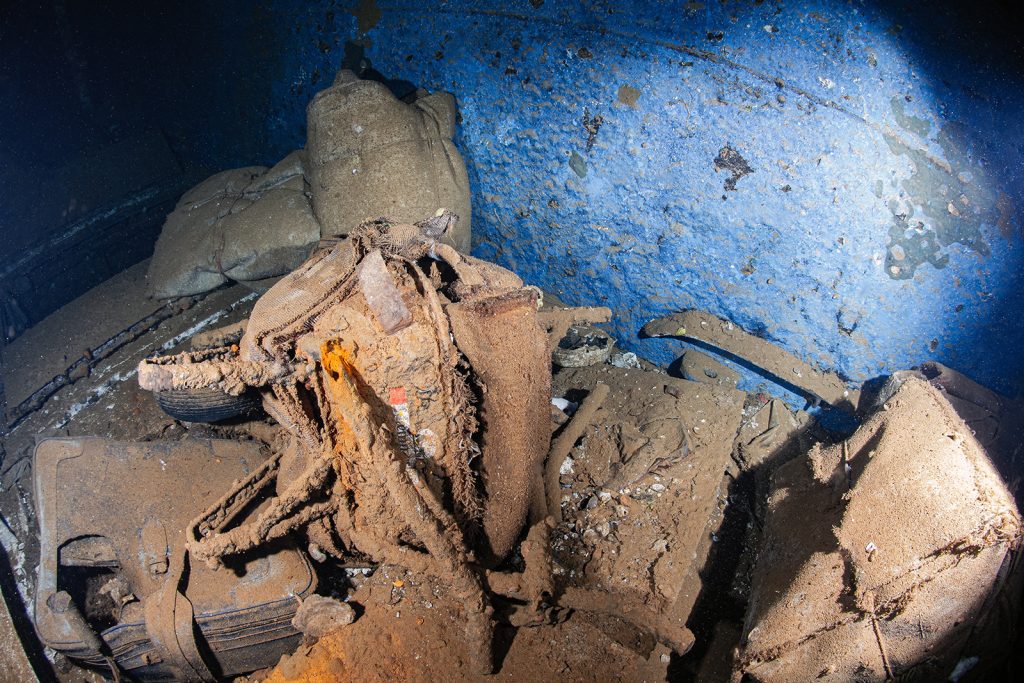
Further to the front is the captain’s deck. I penetrated the wreck, and swam into the room of the captain and saw his bed. There were not many instruments left. I found the exit by a door and continued on my way, via port side, and entered the cargo zone via an open hatch. I descended into the hatch and swam into the corridors of the ship, where you can still find remnants of cars.
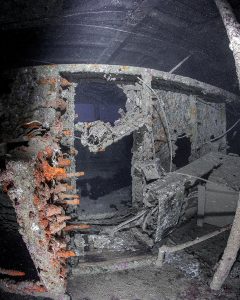
It was still grim, knowing that many lives were lost in this tragic accident. On the way, I came across a few wheelbarrows with mattresses in them, and suitcases. From afar I suddenly saw the light penetrating back into the wreckage. After emerging from the wreckage, I looked for a way to the restaurant. I went through an opening in the restaurant and adopted a stable position, so that I could take some photos. The tables were still standing, but the upholstery had deteriorated bit by bit over the years.
It was time to say goodbye to this beautiful wreck and discharge my decompression duties. Once back on the boat, everyone was quiet for a moment. They all think it was a beautiful wreck, but it will always remain a cemetery, and we must show the necessary respect.
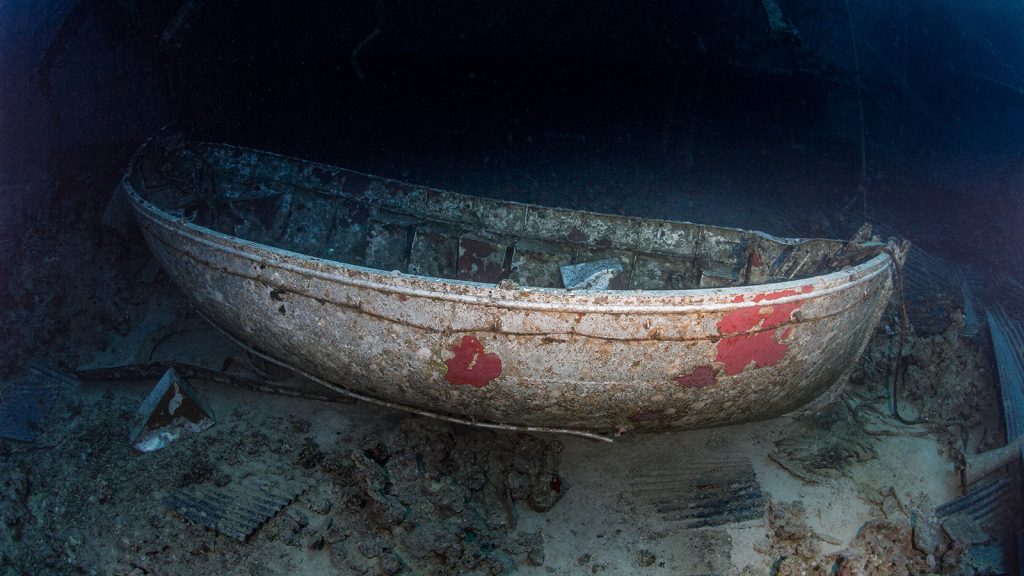
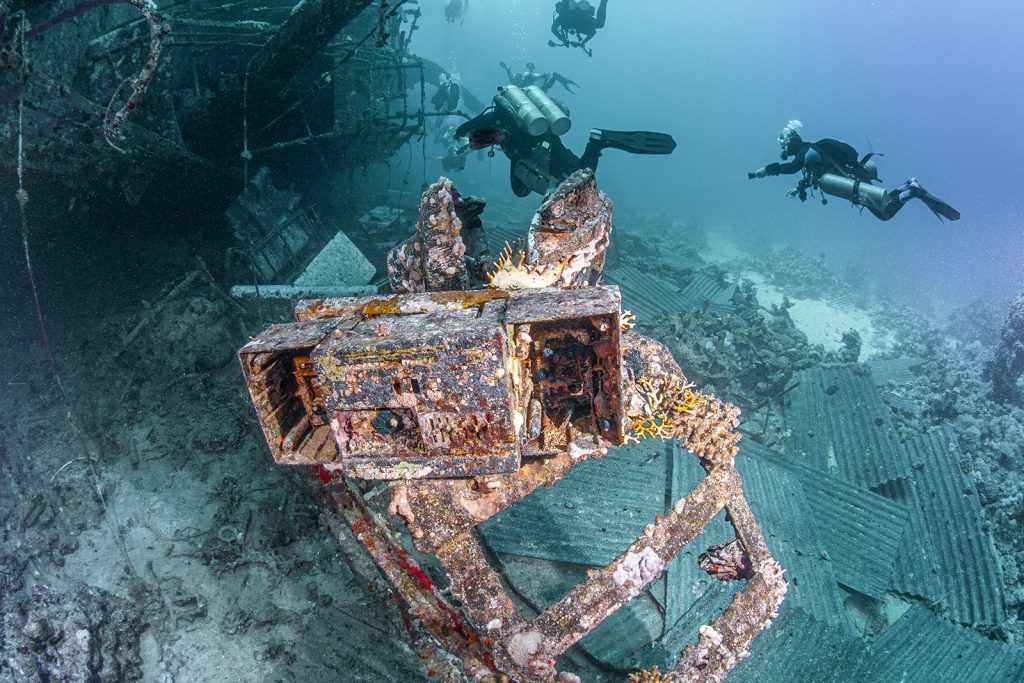
Salem Express – Wreck Data:
| Location: | Near Safaga, Egypt |
| Coordinates: | N 26 38.375, E 34 3.695 |
| Length: | 115 meters |
| Width: | 17.83 meters |
| Draft: | 4.92 meters |
| Power: | 14,880 hp |
| Top speed: | 20 knots |
| Vehicle capacity: | 140/230 |
| Cargo capacity: | 192 LIM (Lanes in metres) |
| Passenger capacity: | 1 256 (day)/1 120 (night) |
| Crew: | 11 officers and 63 seamen |
Additional resources:
InDepth: Trip Report: The Wreck of the MT Haven by Kurt Storms
InDepth: Diving Into The Famous Ressel Cave by Kurt Storms

Kurt Storms is a member of the Belgian military, an underwater cave explorer, and an active technical /cave/rebreather diving instructor for IANTD. He is also an ambassador for Divesoft and Ursuits. He started his dive career in Egypt on vacation, and the passion for diving never ended. Kurt is also founder and CEO of Descent Technical Diving. He dives several CCRs such as AP Diving, SF2, and Divesoft Liberty SM. Kurt is also one of the push-divers documenting a new slate mine in Belgium (Laplet). This project was news on Belgium Nationale TV. Most of his dives are mine and cave dives. In his own personal diving, Kurt’s interests are deep extended-range cave dives. His wife (Caroline) is also an enthusiastic cave diver. In his free time, he explores Belgium’s slate mines, and often takes his camera with him to document the dives.



















